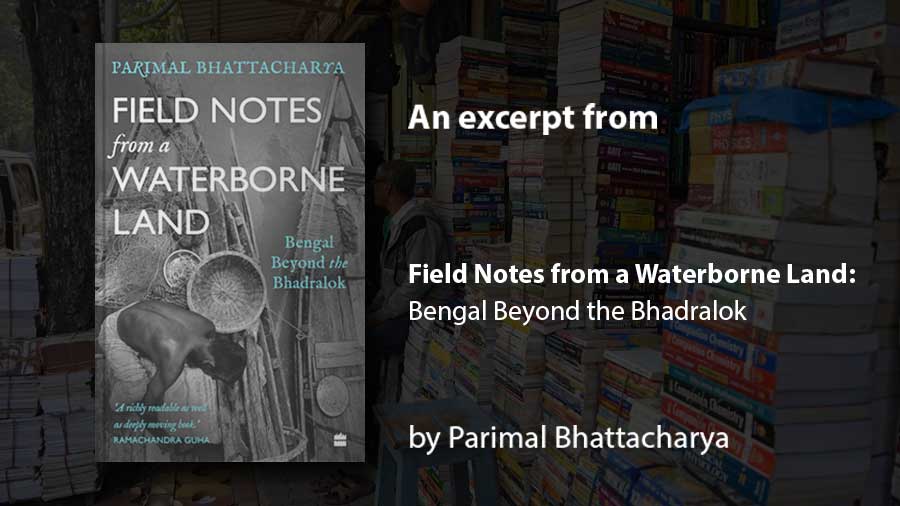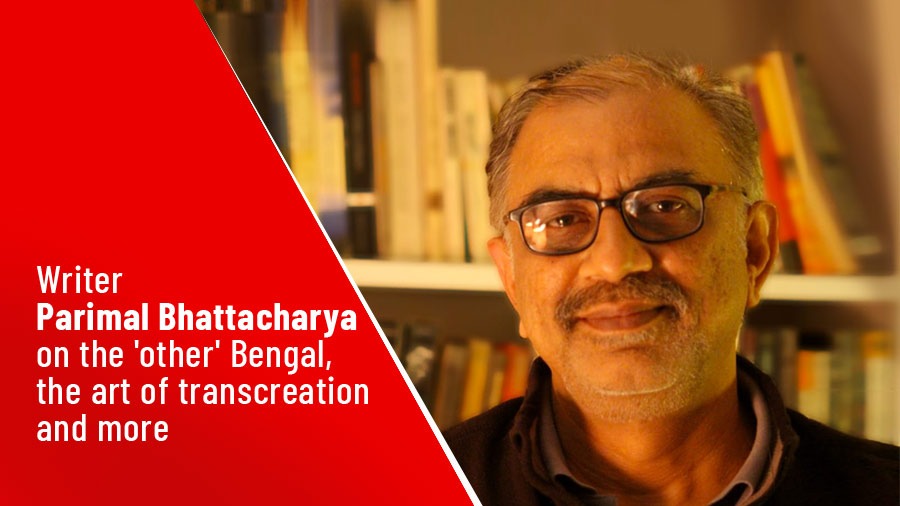In Field Notes from a Waterborne Land: Bengal Beyond the Bhadralok, Parimal Bhattacharya blends facts from history and geography with myths and memories from a lesser-known side of Bengal.
Be it the mystery of the Sundarbans or the dense forests of Simlipal, Bhattacharya delves beyond the Bengali intelligentsia, or ‘Bangali bhodrolok’, and sheds light on the lives of a cross section of people from across this waterborne land.

Here’s an excerpt, selected by the author, exclusively for the readers of My Kolkata:
I noticed that since the Marichjhapi island had appeared on the distant bank, like a wisp of dark memory, the passengers on the boat had fallen silent. We could hear the thrum of the engine and the purl of waters. Some had turned their heads towards the island. Now appeared, on both the banks, the forests that were part of the protected national park. It would continue until the end of the journey.
We were now entering the Project Tiger territory.
Forests. Does the word evoke an image of tall, old trees speckled with pencils of sun and echoing with the call of beasts? Forget it here. Here, between man and forest, lie coiling waters, a liquid labyrinth that ebbs and flows every six hours. The high tides open watery vistas into a world of gaunt, leafy trees – geon, bayen, keora,sundari and other sturdy mangrove species.It briefly allows the narrow boats into the Sundarbans’ dark, moist heart. At low tide the waters recede, laying bare spidery stilt roots sunken into soft mud. Mud: supple and translucent as a newborn’s flesh, studded with scarlet crabs and nicked with the feet of fish-eating birds. Crocodiles rest on them like bored maharajas and spotted deer foot the shadows. But the most sought-after species, also the most feared, is a highly elusive animal and its sightings are very rare. The locals call him ‘Boro Miyan’, Mr Big.
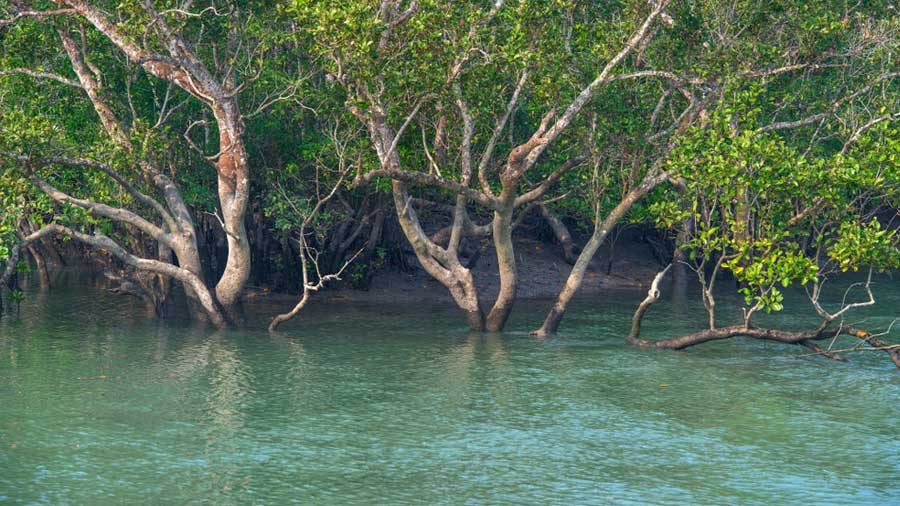
The mangroves of Sundarban TT archives
After about three hours on the vast expanse of Raimangal, our boat veered into Korekhali, a narrow channel. This channel connected Raimangal with Kalindi, another major river that marked the boundary between India and Bangladesh.
‘Here, we call these channels do-aniya, because the tides flow in and out from both its ends,’ Dulal informed me.
Korekhali had sparse human settlements along its left bank. On its right was the forest, with nylon netting strung along the water’s edge. The forest department set up these nets to keep the tigers from entering the settlements.
‘Aren’t the nets too flimsy for the big animal?’ I wondered aloud. ‘Yes,’ Dulal agreed. ‘But they normally avoid any kind of obstacle.’ ‘Unless they become man-eaters,’said the old, bearded Muslim in a low, silken voice.
By now the crowd of passengers had thinned. The white rooster had found a perch on the folded toilet seat we were carrying and was dozing with its free leg tucked under the belly.
The old man continued:
‘Boro Miyan is a most patient animal. And clever too. He will search out a gap in the netting and then swim across the river. But he follows etiquette. In the villages here, you’ll notice thin lattice work around all cottage porches. Boro Miyan can easily push through them if he wants to, but normally, he doesn’t.’
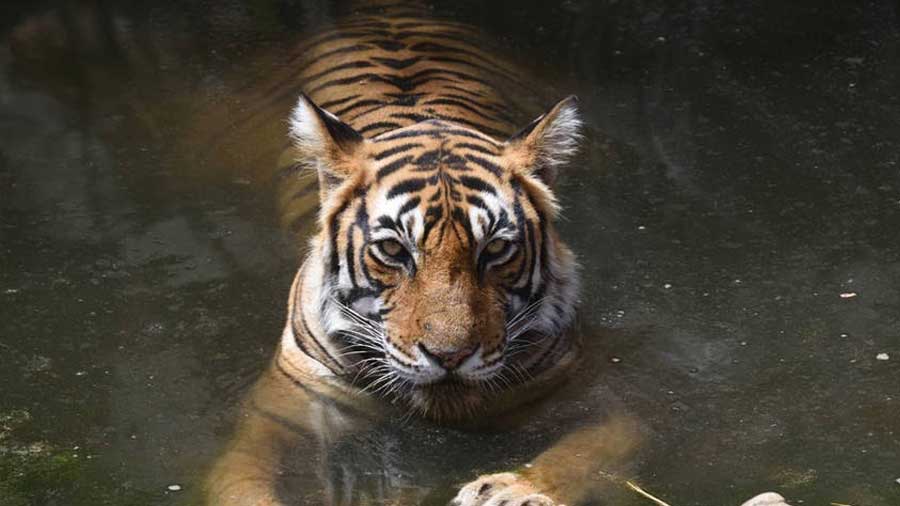
The Royal Bengal Tiger is called ‘Boro Miyan’ (Mr Big) by the local people TT Archives
I was struck by the respectful tone in which he referred to the dreaded animal. Such an attitude towards a wild, ferocious animal was alien to me. I could vaguely sense that I was entering a world of mystery – not only of physical nature but also of perceptions. I turned to gaze at the monotonous, impenetrable wall of green, barely twenty feet from the boat, to look for a sign of life. Daylight had weakened. Shadows were gathering under the fronds of low hental bushes. Another half an hour into the dwindling Korekhali, and the engine roared and spewed thick diesel fume in protest.The boatman switched it off and steered the boat forward with a long bamboo pole. Our journey was soon cut short at a place called Kalitala. The river had shrunk here into a muddy stream trickling along a deep siltbed. Seshergram was still four kilometres away.
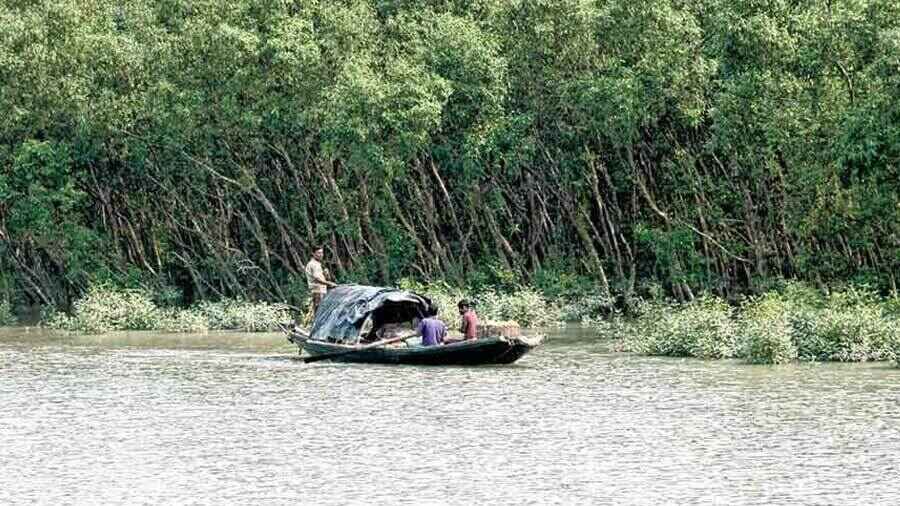
TT Archives
Kalitala had a panchayat office and a few brick buildings. The handful of passengers on the boat, all men, climbed down and strode off in different directions. The old man transferred the rooster into the arms of a boy who had come to receive him with a water jug. Then he adjusted the skullcap and unrolled a prayer mat upon the flat top of the bund.
‘Now we must find a rickshaw-van,’ Dulal said. ‘But before that, let’s have a cup of tea. The last tea stall in this part of the island is over there.’
A pair of village men were sitting on a rickety bench before the tiled-roofed tea shop. One of them was reading aloud the morning’s newspaper. His listener wore dark spectacles normally used after a cataract surgery. Dulal bought a big packet of buns.
‘We don’t get these things in our village,’ he said with an embarrassed smile. ‘Nobody even drinks tea in our home. I am carrying tea leaves with me.’
‘But why these buns?’ I asked.
‘Oh, that’s for our tiffin.’
Tea, tiffin. We were carrying with us the rituals of another world.
Excerpted with permission from the publisher. Field Notes from a Waterborne Land: Bengal Beyond the Bhadralok by Parimal Bhattacharya will be published by HarperCollins India on December 30, 2021
(Buy the book here.)
